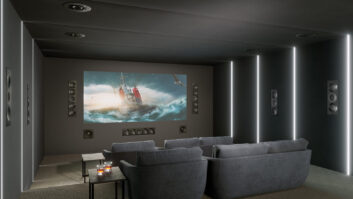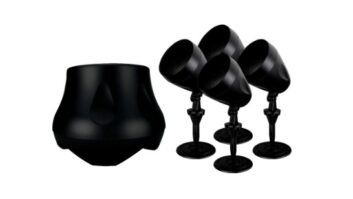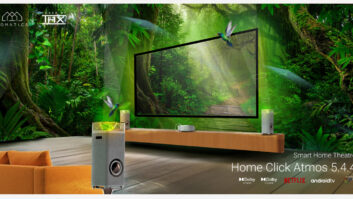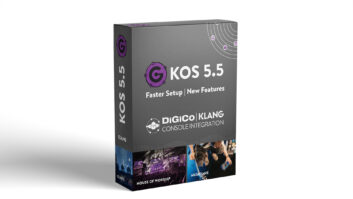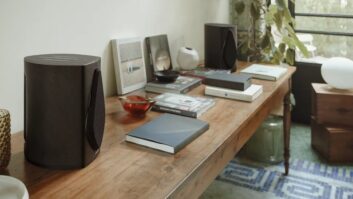LAS VEGAS —
THX plans at to demonstrate during International
CES a horizontal single-enclosure speaker that
“puts the stereo sweet spot in every chair in the room,” the
company told TWICE.
The THX Steerable Line Array technology, which the
company could decide to license, uses digital signal processing
(DSP) and other techniques to create “multiple
unique sweet spots at the same time so everyone can enjoy
content at the same time no matter where they are sitting
in the room,” the spokesperson explained.
The technology will be demonstrated in a concept
product at the company’s private suite at the Renaissance
Hotel.
The concept system that THX will demo delivers left
and right channels from 92 tiny drivers in a line array in
an enclosure with only about a cubic foot of internal volume.
DSP is applied to direct multiple beams of sound to
any part of the room, enabling every seat in the room to become “the best seat in the house,”
the company said.
The technology is not dependent on
reflecting sound waves off walls, added
THX senior VP Laurie Fincham.
The concept speaker is 10 inches
high by 82 inches wide by 4 inches
deep and features an outboard amplifier/
DSP module that, if it were embedded
inside the enclosure, would add
only about an eighth of an inch to the
enclosure’s depth, said Fincham. Frequency
response is 30Hz to 20kHz
with sound pressure levels of “well over
100dB,” he said.
The concept speaker will steer sound
to create eight sweet spots in the room,
but if higher processing power were
used, the technology could create more
simultaneous sweet spots, Fincham
noted.
Because of its scalability, the technology
can be used to create smaller
or larger enclosures with as few as 25
drivers or as many as 100 depending on the desired sound levels and lowfrequency
cutoff, he said. “This could
be as little as one liter of total volume or
equivalent to a 4-inch cube. The bottom
line is that the enclosure is small and
takes up considerably less space than
existing systems.”
A Steerable Line Array stereo system
“can be made so unobtrusive that it
can disappear leaving only the music,”
a company statement added. The system’s
low-profile analog amplifier delivers
“traditional audiophile quality” with
“modern requirements for the highest
energy efficiency.”
The technology could be designed
into two vertically oriented towers in
lieu of one horizontal speaker to deliver
the same effects, said Fincham. The
technology could also be used in two
horizontal speakers, one for the front of
the room and one for the back, to deliver
multichannel surround sound to multiple
sweet spots in a room, he added.
In the demo speaker, tweeters are
positioned on the front panel and fire
forward. Low-frequency drivers are
mounted inside the enclosure at a
90-degree angle to the tweeters, firing
into a front-panel slot running up and
down the face of the enclosure. Each
driver is powered by its own analog amplifier.
The technology is based on general
principles outlined in an Audio
Engineering Society paper published
by Fincham and Peter Brown of THX.
“With steering there are two aspects
that technologies need to address,”
Fincham added. “One is the steering
of sound to one or more listening
locations, and two is controlling beam
width. Our system handles both these
aspects at the same time. We can ‘illuminate’
many listening locations, and
we can control beam direction.”
In 2008, a U.K.-based company
called Airsound unveiled technology
that promised a room-wide sweet
spot delivered by a single-enclosure
speaker. Other companies use DSP in
speakers to steer the stereo sweet spot
to a particular location to compensate
for poor speaker placement but not to
deliver a sweet spot to every seat in
the house. Other companies, such as
technology developer Focus, use DSP
to steer a surround-sound sweet spot
to a specific location in a room.




